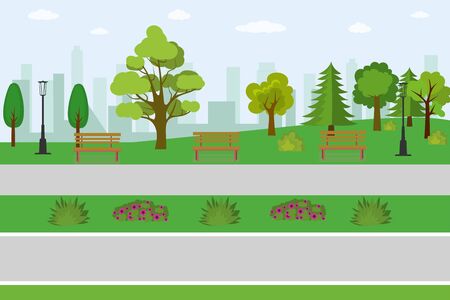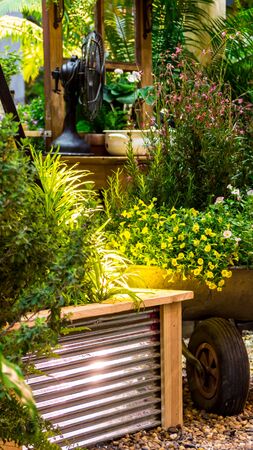1. Assess Your Backyard Space
Before you start building raised beds, it’s important to take a good look at your backyard. Whether your space is big or small, understanding the layout and conditions will help you plan smart and make the most out of your garden.
Evaluate the Size of Your Yard
Start by measuring your available space. Knowing the dimensions helps you figure out how many raised beds you can fit and how large each one should be. If you have a small yard, think vertically or consider narrower beds. In larger spaces, you might have room for multiple beds with walking paths in between.
Quick Tip:
Leave at least 18-24 inches of walking space between beds so you can move around comfortably.
Check Sun Exposure
Most vegetables and herbs need at least 6-8 hours of direct sunlight per day. Spend a day observing how the sun moves across your yard. Mark areas that receive full sun versus partial or full shade. This will guide you in placing your raised beds where plants can thrive.
Sunlight Guide
| Sunlight Level | Suitable Crops |
|---|---|
| Full Sun (6-8+ hrs) | Tomatoes, Peppers, Cucumbers, Squash |
| Partial Sun (4-6 hrs) | Lettuce, Kale, Spinach, Carrots |
| Shade (Less than 4 hrs) | Herbs like Mint, Parsley; Leafy Greens |
Inspect Soil Conditions
Even though raised beds use new soil, checking your existing soil is still helpful. Avoid placing beds in areas with poor drainage or that tend to stay soggy after rain. Also, steer clear of spots with lots of tree roots or where water pools frequently.
Consider Existing Landscaping Features
Take into account trees, fences, patios, sheds, and other landscape elements. Trees may cast too much shade or compete for nutrients. Fences can block wind but may also limit light. Try to balance aesthetics with function when picking your bed locations.
Checklist for Site Assessment:
- Measure total usable space
- Track sun exposure throughout the day
- Look for well-drained areas
- Avoid tree roots and low spots
- Note nearby structures and shade sources
Taking time to assess your backyard helps you avoid common mistakes and ensures your raised beds are placed in the best spots for a productive garden.
2. Choose the Right Materials
Picking the right materials for your raised beds is just as important as deciding where to place them. The material you choose will affect how long your garden beds last, how much maintenance they need, and even how they look in your backyard. Different climates also play a big role in choosing materials that won’t rot or rust too quickly.
Popular Materials for Raised Beds
Here’s a breakdown of some of the most common materials used for building raised garden beds in the U.S., along with their pros, cons, costs, and durability.
Comparison of Raised Bed Materials
| Material | Pros | Cons | Estimated Cost | Durability (Years) | Best For |
|---|---|---|---|---|---|
| Cedar | Natural rot resistance, insect-resistant, attractive appearance | More expensive than other woods | $$$ | 10–15+ | Mild to wet climates |
| Redwood | Highly durable, naturally decay-resistant, beautiful grain | Very pricey and not always sustainably sourced | $$$$ | 15–20+ | Drier climates, premium gardens |
| Composite Wood | Recycled materials, low maintenance, weather resistant | Can warp under extreme heat, less natural look | $$$ | 10–25 | Urban or modern-style gardens |
| Galvanized Metal | Sleek look, won’t rot or attract pests, easy to assemble kits available | Can get hot in full sun, may rust over many years if coating wears off | $$–$$$ | 20+ | Dry or hot climates; contemporary garden styles |
Selecting the Right Material for Your Climate and Budget
If you live in a wet climate like the Pacific Northwest, cedar or redwood are great choices due to their natural resistance to moisture and insects. In drier areas like the Southwest, metal beds can withstand intense sun and don’t require much upkeep. Composite wood is great for those who want a low-maintenance option with a clean look that also supports sustainability efforts.
A Few Extra Tips:
- Avoid pressure-treated lumber: Older versions used chemicals that could leach into your soil. Newer types are safer but still not ideal for edible gardens.
- If youre on a tight budget: Pine is cheaper but won’t last as long—consider lining it with landscape fabric to extend its life.
- Add a liner: Especially useful for metal beds to prevent overheating and protect roots during hot summers.
The material you pick should match your gardening goals, design preferences, and local conditions. Whether youre looking for something eco-friendly, modern-looking, or long-lasting, theres a perfect raised bed material out there for your space.

3. Design Bed Dimensions and Layout
When planning your raised bed garden, getting the dimensions and layout right is key to making your space both productive and easy to manage. Whether you have a small backyard or a large one, choosing the right height, width, and length for your beds—as well as organizing pathways and orientation—can make gardening more enjoyable and accessible.
Choosing the Right Dimensions
The size of your raised beds should balance comfort, accessibility, and available space. Here are some general guidelines:
| Dimension | Recommended Size | Why It Matters |
|---|---|---|
| Height | 12″ to 24″ | Taller beds reduce bending and are great for root depth; shorter beds are easier to build and fill. |
| Width | 3 to 4 | Makes it easy to reach the center from either side without stepping into the bed. |
| Length | 6 to 8 | Long enough for multiple plants but not so long that it becomes hard to walk around. |
Plan for Comfortable Pathways
Pathways between your raised beds help with air circulation, access, and keeping weeds down. Aim for at least 18″ of space between beds if youre tight on room, or go up to 24″-36″ if you want wheelbarrow access. For larger spaces or community gardens, wider paths can also accommodate carts or mobility aids.
Suggested Pathway Widths:
| Type of Access | Recommended Width |
|---|---|
| Foot traffic only | 18″–24″ |
| Wheelbarrow access | 30″–36″ |
| ADA accessible (wheelchair) | 36″–48″ |
Selecting the Right Orientation
The direction your beds face affects how much sun your plants get. In most parts of the U.S., especially in northern states, orienting your raised beds north-to-south allows plants to get more even sunlight throughout the day. This helps prevent shading and promotes better growth.
Quick Tips:
- North-South orientation: Best for full-sun exposure across all seasons.
- East-West orientation: May be better in hot southern climates to protect plants from intense afternoon sun.
Create a Functional Layout
If youre working with limited space, consider grouping beds in an L-shape or U-shape configuration around a central workspace. In larger yards, arrange rows with consistent spacing for easy irrigation and maintenance. Leave space at the ends of long beds so you can walk around without stepping over soil.
Layout Ideas Based on Yard Size:
| Yard Size | Suggested Layout |
|---|---|
| Small (under 500 sq ft) | L-shape or corner beds with narrow paths |
| Medium (500–1000 sq ft) | Parallel rows with central walkway |
| Large (over 1000 sq ft) | Grid layout with wide paths for equipment access |
A thoughtful layout not only makes gardening easier but also enhances the overall look of your backyard. Take time to sketch out your design before building—you’ll thank yourself later!
4. Plan for Drainage and Soil Needs
When designing raised beds for your backyard—whether it’s a small city garden or a spacious suburban yard—it’s essential to think about how water moves through the soil and what kind of soil your plants need to thrive. Proper drainage keeps plant roots healthy, while the right soil mix ensures strong growth and bountiful harvests.
Ensure Proper Drainage
Poor drainage can lead to waterlogged roots, which causes rot and stunted growth. Here are a few easy ways to make sure your raised beds drain well:
- Gravel Base: Add a layer of gravel (about 1–2 inches) at the bottom of your raised bed before adding soil. This helps excess water escape more easily.
- Raised Platforms: In areas with heavy rain or poor ground drainage, consider placing your raised beds on wooden pallets or concrete blocks to lift them off the ground.
- Drainage Holes: If youre using containers or enclosed boxes as raised beds, be sure they have enough holes at the bottom for water to flow out.
Choose the Right Soil Mix
The soil you use in a raised bed is different from native ground soil. It should be light, nutrient-rich, and well-draining. A good general-purpose mix includes topsoil, compost, and other organic matter.
Recommended Soil Mix Ratio
| Ingredient | Percentage | Description |
|---|---|---|
| Topsoil | 50% | Provides structure and holds nutrients |
| Compost | 30% | Adds organic matter and promotes microbial activity |
| Coco coir or Peat moss | 10% | Improves moisture retention |
| Perlite or Vermiculite | 10% | Aerates the soil and aids in drainage |
Consider Local Conditions
If youre gardening in an area with heavy clay or sandy soil, adjust your mix accordingly. For example, in clay-heavy regions, add more perlite to improve aeration. If youre dealing with sandy conditions, increase compost and coco coir to help retain moisture.
Avoid Using Native Soil Alone
Your backyards native soil might not be ideal for raised beds because it can compact too easily or lack nutrients. Mixing in compost and other amendments helps create a loose, fertile environment where roots can grow freely.
Test Your Soil Before Planting
A simple home test kit can check pH levels and major nutrients like nitrogen, phosphorus, and potassium. Balanced soil makes a big difference in plant health and productivity.
Quick Tip:
If you’re building multiple beds across different parts of your yard, test each location’s drainage by filling the hole with water and watching how quickly it drains. This will help you decide if you need extra drainage support in some spots.
Planning ahead for drainage and soil needs will save time later and help your garden thrive from day one.
5. Incorporate Functional Features
When planning and designing raised beds for your backyard, whether its a small urban space or a large suburban lot, adding functional features can make a big difference in both productivity and ease of maintenance. These elements not only help your plants thrive but also save you time and effort throughout the gardening season.
Trellises for Vertical Growth
Trellises are perfect for climbing plants like tomatoes, cucumbers, peas, and beans. They help maximize vertical space, especially in smaller gardens, and improve air circulation around your plants, reducing disease risk. You can attach trellises directly to the raised bed frame or place them just behind it.
Popular Trellis Materials:
| Material | Benefits |
|---|---|
| Wood | Natural look, easy to customize |
| Metal | Durable and weather-resistant |
| Nylon Netting | Lightweight and affordable |
Cold Frames for Season Extension
If you want to start planting earlier in the spring or extend your harvest into fall, cold frames are a smart addition. These mini-greenhouses trap heat and protect seedlings from frost. Place them directly over your raised beds for quick installation and easy access.
Cold Frame Tips:
- Use old windows or clear polycarbonate panels as lids.
- Add hinges to easily open for ventilation on warm days.
- Angle the lid southward to capture maximum sunlight.
Irrigation Systems for Easy Watering
A consistent watering schedule is key to healthy plants. Installing a simple drip irrigation system or soaker hoses can automate this task and ensure that moisture reaches the root zone efficiently without waste.
Irrigation Options Comparison:
| System Type | Best For | Ease of Installation |
|---|---|---|
| Soaker Hose | Small to medium beds | Very easy |
| Drip Irrigation Kit | Larger gardens with multiple beds | Moderate effort required |
| Manual Watering with Wand | Tiny spaces or few plants | No setup needed |
Edging for Structure and Weed Control
Add edging around your raised beds to keep soil in place, define garden borders, and prevent grass or weeds from creeping in. Edging also gives your garden a clean, organized look.
Common Edging Materials:
- Brick or Stone: Attractive and long-lasting but heavier to install.
- Plastic or Rubber Strips: Lightweight and flexible; great for curved layouts.
- Wood Boards: Match wooden raised beds for a cohesive design.
By incorporating these practical features into your raised bed garden, youll create a more efficient, productive, and enjoyable growing space that works well for any backyard size.
6. Adapt Your Design for Small or Large Spaces
Raised beds are incredibly versatile and can be tailored to fit any backyard size—from compact city yards to wide-open suburban gardens. The key is to scale your setup according to the available space while maximizing productivity and ease of access.
Small Backyard or Urban Garden Solutions
If youre working with a small yard, patio, or even a balcony, raised beds can still be a great option. Focus on vertical gardening and compact layouts that make the most of every square foot.
Tips for Small Spaces:
- Use vertical structures: Trellises, wall planters, or stacked beds help grow more in less space.
- Choose compact crops: Lettuce, radishes, herbs, and bush varieties of tomatoes or cucumbers thrive in tight quarters.
- Modular bed designs: Use smaller beds (e.g., 2×4 ft) that can be arranged flexibly depending on your layout.
Example Layout for Small Space (Approx. 8×10 ft)
| Bed Size | Number of Beds | Ideal Crops |
|---|---|---|
| 2×4 ft | 2 | Lettuce, spinach, herbs |
| Trellis Area | 1 | Cherry tomatoes, peas |
Designing for Larger Backyards
If you have a bigger yard to work with, you have more flexibility in your design and crop choices. You can incorporate wider paths, more planting areas, and even dedicated zones for different types of plants.
Tips for Larger Spaces:
- Create multiple zones: Separate areas for vegetables, flowers, or perennials make maintenance easier and help with crop rotation.
- Add pathways: Keep at least 18–24 inches between beds for easy access with wheelbarrows or tools.
- Diversify bed sizes: Mix standard-sized beds (e.g., 4×8 ft) with specialty beds like U-shaped or L-shaped configurations for style and function.
Sample Layout for Large Yard (Approx. 20×30 ft)
| Bed Size | Number of Beds | Suggested Plants |
|---|---|---|
| 4×8 ft | 4 | Corn, zucchini, peppers, beans |
| L-shaped Bed | 1 | Culinary herbs and flowers |
| Trellised Bed (4×6 ft) | 1 | Cucumbers, pole beans |
No matter how much—or how little—space you have to work with, raised beds can help you grow a productive and beautiful garden. By adjusting the size, shape, and layout of your beds to fit your space, youll be able to enjoy homegrown food right in your own backyard.


